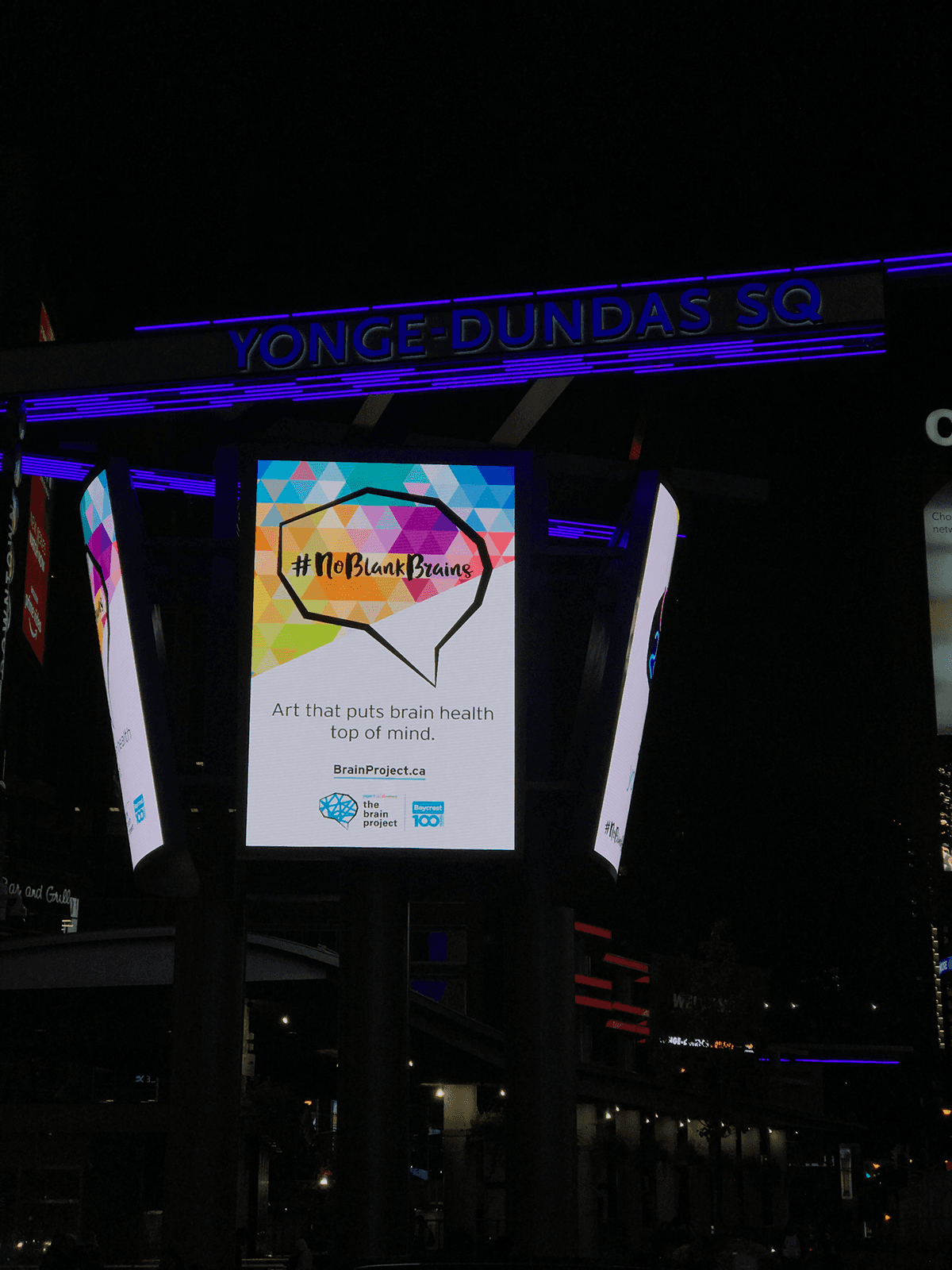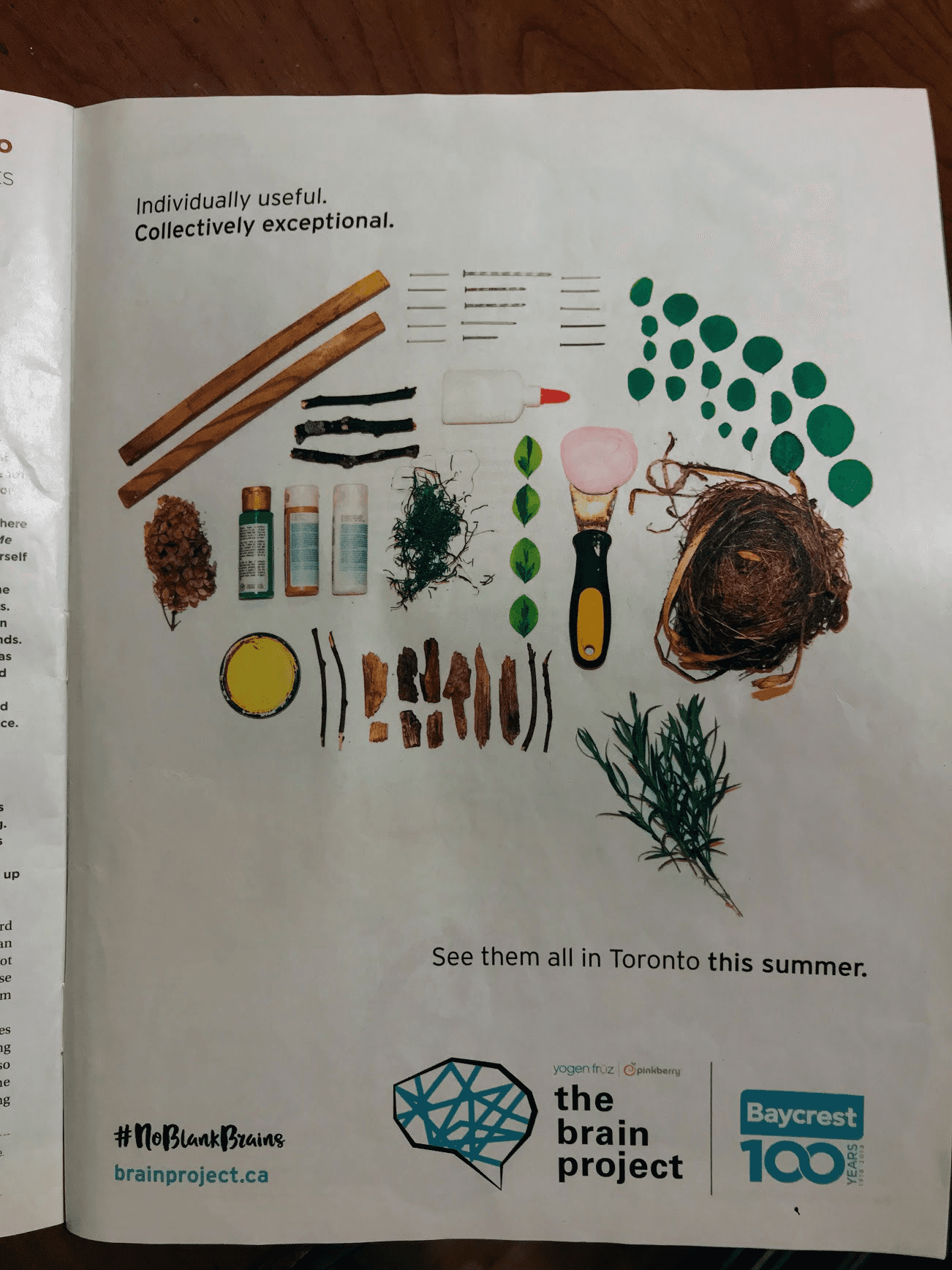Key Points:
Objective: Redesign the website to increase user engagement, drive donations, and promote brain health awareness.
Challenges: Low user interaction, minimal donation conversions, and lack of clear user flow.
Solution: Streamlined the user experience, introduced interactive features, simplified donation process, leveraged storytelling, and integrated social proof.
Results:
35% increase in visitor engagement
27% improvement in donation conversions
50% growth in referral traffic
20% increase in newsletter sign-ups
Business Impact: Helped raise $3 million in cumulative funds, resulting in greater visibility and long-term donor relationships.
Takeaway: Growth-focused design and seamless user experiences drive both engagement and meaningful action.
Link to website: https://www.brainproject.ca/2018-artists/
Baycrest x Yogen Früz Pinkberry Brain Project Website Revamp
In 2019, I had the opportunity to work on an exciting project: the website for Baycrest Brain Project. The Brain Project, a Toronto-based initiative by Baycrest, is a city-wide art exhibit that uses art to raise awareness about brain health and Alzheimer's. My role was to overhaul their website with a focus on growth and user engagement.
The Challenge
The website had a clear mission—to drive donations, increase awareness, and engage users with the art exhibit. However, it was underperforming on multiple fronts. There was minimal user interaction, engagement metrics were low, and donations weren’t reaching the goals set by the organization.
Visitors would check out the art and leave the site without taking meaningful actions like sharing, subscribing, or donating. My challenge was to optimize the site for growth, increasing engagement, driving up donations, and improving overall user retention.
The Solution
I focused on reimagining the entire user experience to better guide visitors from passive observers to active participants. To do this, I broke down the site’s structure and rebuilt it with the user’s journey in mind, aiming for a seamless blend of discovery, engagement, and action.
Streamlining the User Flow: The original site lacked a clear path for users, so I restructured the layout to create a more intuitive flow. Starting from the homepage, users were greeted with a more engaging narrative that introduced them to the cause, followed by prominent calls to action (CTA) like "Explore the Art" and "Donate." Each section was designed to build curiosity and push users toward deeper engagement with the content.
Creating Moments of Interaction: To make the experience more engaging, I introduced interactive elements. For instance, I implemented an interactive map that allowed users to virtually tour the brain sculptures spread across Toronto. Users could click on each sculpture to read the artists' stories, share them on social media, or even "favorite" certain sculptures. These small but meaningful moments of interaction made users feel more connected to the project.
Simplifying Donations: Donations were critical to the project, so I overhauled the donation flow. I cut down the number of steps involved, reducing friction and making the process more accessible, especially for mobile users. By adding visual prompts and creating clear donation tiers, we made it easy for users to understand the impact of their contributions and donate with confidence.
Leveraging Storytelling: The heart of the Brain Project lies in its artists and their unique stories. I restructured the artist profiles to include personal narratives that connected emotionally with the audience. This storytelling approach created a stronger emotional bond, driving users to take action, whether through sharing or donating.
Integrating Social Proof: We integrated social proof through testimonials from previous donors and showcasing the media coverage the project had received. Highlighting these success stories instilled trust and encouraged new visitors to participate.
The Results
The results were nothing short of transformative:
Visitor engagement increased by 35%, with users spending more time on the site exploring the different aspects of the project.
Donation conversions improved by 27%, with optimized calls-to-action and streamlined payment processes.
Referral traffic increased by 50%, thanks to shareable content and social integrations.
The site saw a 20% increase in newsletter sign-ups, allowing the Brain Project to nurture potential donors and repeat visitors.
Business Impact
By improving engagement and optimizing donation flows, I directly contributed to the project's $3 million in cumulative funds raised. More engaged users meant more visibility for the Brain Project, resulting in greater media coverage, brand partnerships, and long-term donor relationships. The optimized website became a growth engine, not just a static gallery of information.

Takeaways
Working on the Brain Project taught me a lot about the balance between mission-driven design and growth optimization. Here are a few key lessons:
Growth loops drive engagement: The referral and retention strategies I implemented led to a flywheel effect, where users continued to return and share, creating organic growth.
Frictionless experiences convert better: Simplifying the donation process through a one-click option drastically improved conversion rates.
Engagement is more than just clicks: True engagement means users are interacting with content and returning for more. Creating an experience they wanted to share helped expand the project’s reach.
This project helped me refine my approach to creating growth-focused experiences that are not just about numbers but about driving real-world impact. It’s work I’m proud of, and it left a lasting impression on how I think about product design for social good.
And Lastly: Expanding Awareness Through Posters Across Toronto
As part of the campaign, several custom-designed posters were plastered all over downtown Toronto and high-traffic areas. These posters featured striking visuals of the brain sculptures along with key messages about the importance of brain health. They served as powerful touchpoints to increase awareness and direct foot traffic to the Brain Project installations, further driving both online and in-person engagement.
See images below




PDF link to the event:
https://www.brainproject.ca/wp-content/uploads/Final-Brain-Project-2019-Catalogue_web.pdf


